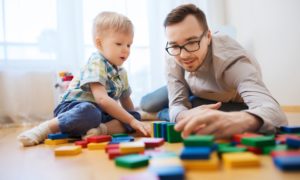Author(s): UNICEF and World Bank Group
Published: March 9, 2022
Report Intro/Brief:
“The effects of the Covid-19 pandemic have been widespread and disproportionately affected vulnerable segments of the population, including children and their families. The modest progress made in reducing child poverty has been reversed in all parts of the world by COVID-19. Impact of COVID-19 on the welfare of households with children – a joint World Bank and UNICEF publication – presents findings from data from high frequency phone surveys collected in 35 countries. The analysis identifies the impact of the crisis on households without and with (few or many) children, both focusing on the initial impact in 2020 but also the subsequent evolution of this impact. The analysis focus on key areas such as income and job loss, food insecurity, social protection programs and access to education, shedding light on the importance of placing children in poverty and their families highly on the agenda in the COVID-19 response and recovery.
KEY HIGHLIGHTS
Initial Impact:
At the onset of the pandemic, households with many children were more likely than households with no children to:
(1) Suffer from income loss, with 76% of households with many children reported experiencing total income loss, versus 55% of households with no children.
(2) Suffer from food insecurity. 24% for households with many children reported an adult member who went without eating for the whole day due to lack of money or other resources, versus 14% of households with no children.
(3) Receive social assistance. 26% of households with many children reported receiving government assistance, versus 12% of households with no children.
(4) Not use technology for education. Only 4% of households with many children reported accessing mobile learning applications, compared with 11% of households with few children (one or two).
(5) Overall, participation in educational activities since school closure due to Covid-19 was low. Among households with children who attended school before school closure, less than 60% of households reported children participating in any educational activities after the school closure due to the Covid-19 outbreak
Evolution of Impact:
Exploring the evolution of impact shows that households with many children are:
(1) Experiencing higher rates of income loss than households with no children, although the differences between groups are not statistically significant.
(2) Experiencing higher rates of food insecurity than households with no children, although both moderate and severe food security indicators show decreasing trends for all households.
(3) Are more likely to receive government assistance, as the share of households receiving government assistance increased for all households 6 to 9 months after the peak stringency of the government response.”
>>> CLICK HERE to see all of Youth Today’s REPORT LIBRARY
































